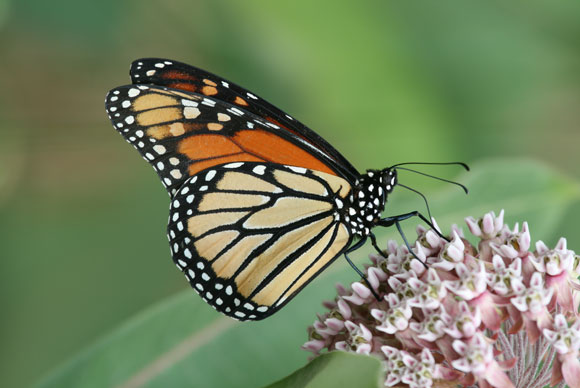
The International Union for the Conservation of Nature (IUCN), a membership union of government and civil society organizations headquartered in Switzerland, added the monarch butterfly to its “red list” of threatened species and categorized it as “endangered” — two steps from extinct, according to an article published today by the Associated Press. IUCN’s members work to advance sustainable development and create a just world that values and conserves nature, according to its website.
“The group estimates that the population of monarch butterflies in North America has declined between 22% and 72% over 10 years, depending on the measurement method,” the article reported.
The United States has not yet designated the monarch butterfly as an endangered species under the Endangered Species Act. In December 2020, the United States Fish and Wildlife Service (USFWS) announced that adding the monarch butterfly to the list of threatened and endangered species is warranted but precluded by work on higher-priority listing actions.
“We conducted an intensive, thorough review using a rigorous, transparent science-based process and found that the monarch meets listing criteria under the Endangered Species Act. However, before we can propose listing, we must focus resources on our higher-priority listing actions,” said U.S. Fish and Wildlife Service Director Aurelia Skipwith in a press release at the time. “While this work goes on, we are committed to our ongoing efforts with partners to conserve the monarch and its habitat at the local, regional and national levels. Our conservation goal is to improve monarch populations, and we encourage everyone to join the effort.”
As with the USFWS announcement in 2020, today’s designation by the IUCN does not change the mission of Farmers for Monarchs. It only reinforces the Collaborative’s commitment to promoting voluntary efforts to restore, enhance, and protect monarch habitat while maintaining productive agricultural operations. We continue to work with our members to help farmers and landowners identify agricultural and conservation practices to support healthy monarch populations, increase awareness of those strategies with the agricultural community and other interested parties, and promote the implementation of those practices that will support monarch butterfly populations in agricultural landscapes.
